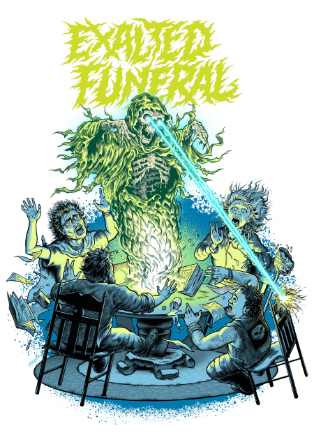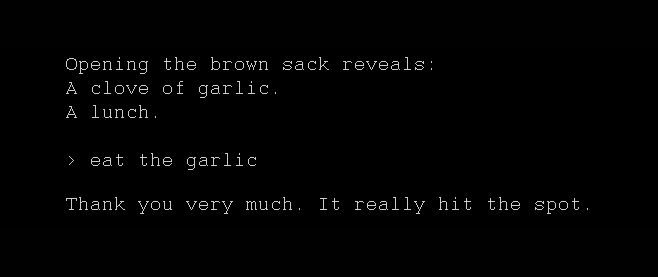Looking back: Remembering Sierra’s ‘Police Quest’ series
 When I look back at my younger years and the time spent staring into the clunky, tan-colored monitor of my Commodore 64, one game quickly pops into mind.
When I look back at my younger years and the time spent staring into the clunky, tan-colored monitor of my Commodore 64, one game quickly pops into mind.
“Police Quest.”
This adventure series from Sierra, who at the time was among the top game developers, followed the adventures of Sonny Bonds, a cop with the fictional Lytton, California police department.
Developed by Jim Walls, a former cop, the games were cemented in real-life police procedure when it came to investigations. There was a booklet which included a list of rules and police codes, something I can remember thinking was so great.
It was 1987, and I was 12 years old.
I loved the real-world logic of the game, and the detail necessary in the tasks you needed to accomplish. It honestly allowed for a view of police work that I don’t think I really appreciated before, something that would get changed even more a year later with the premiere of “Cops” on TV.
In the first of the “Police Quest” games, “In Pursuit of the Death Angel,” Bonds, a uniformed police officer, ends up as a narcotics detective who goes undercover to bring down drug dealer Jessie Bains, aka “The Death Angel.” Bonds also has a love interest — his former high school sweetheart-turned hooker, Marie.
 The game’s graphics were ridiculous by today’s standards, but polished for the time. It would receive a VGA makeover several years later, and honestly looks really good.
The game’s graphics were ridiculous by today’s standards, but polished for the time. It would receive a VGA makeover several years later, and honestly looks really good.
The game’s puzzles and challenges are all solved with the help of real-world police work, as you make your way through the game to earn 245 points (or as close to that as possible). You deal with traffic stops, drunk drivers and more, all by the book.
Sonny Bonds returns as a homicide detective in “Police Quest II: The Vengeance.” Bains breaks out of jail in this 1988 sequel and kidnaps Marie (who is now Bonds’ gal pal). The visuals are more spiffy this time around, with more shading and detail, but not that great a departure from the original.
The game gets more reliant on police procedure this time around, and you need keep your gun in tip top shape — as well as practice your aim at the shooting range. Bonds also is forced to go diving looking for clues, and avoid methane gas in the sewers.
I can remember how challenging the game’s climax was. I was shot and killed a few times before finally bringing an end to Jessie Bains and his reign of terror. The sequel was notably darker than the original game, and was actually fairly adult in it subject matter.
I loved it.
 “Police Quest III: The Kindred” sort of signaled that perhaps the ride was coming to an end.
“Police Quest III: The Kindred” sort of signaled that perhaps the ride was coming to an end.
Bonds is back in blue as a police sergeant, and the procedural element of the game starts off a little dry. Things start moving, however, when his wife, Marie, get stabbed. Bonds heads back into homicide to bring down a drug cartel, and face off with Jessie “Death Angel” Bains’ brother, Michael.
Like “Police Quest II,” the game is fairly dark in its tone, with a rather frank and direct approach to crime.
But there was something else. I think by “Police Quest III” the game had become too procedural in a way. The driving through town became more elaborate, allowing you to control the car as you made your way through the fictional Lytton, but it got too mechanical.
The story was just getting too bogged down in minute details of police work.
Testifying at a trial, getting paper work sorted. All interesting in terms of understanding the day-to-day of being a cop, but as a game it felt a little too sluggish.
There was also a lot of going home and going back to work.
 The “Police Quest” series would live on for two more games, but it really died here. The fourth in the series, “Police Quest: Open Season,” was a different kind of game with a new central character.
The “Police Quest” series would live on for two more games, but it really died here. The fourth in the series, “Police Quest: Open Season,” was a different kind of game with a new central character.
Gone was Sonny Bonds, and in was John Carey. Fictional Lytton was left behind for the all-too real Los Angeles. Out was series creator Jim Wells, and in was Daryl Gates, who is considered the “father” of SWAT, and was police chief in LA for many years until leaving after the Rodney King beating, trial and riots in 1991-92. (He died earlier this year at the age of 83.)
Released in 1993, the game ditched much of the procedural things, and dealt heavily with drugs, corruption and violence, as well as youth crime. Basically all the aspects of Los Angles crime that had become headlines nationwide.
The visual style of the game took on a more realistic tone, with photos being used as backgrounds and characters given a more real-world touch.
The reason I don’t have much to say about this game, though, is that I was one of many who fell victim to its flawed design. The game crashed regularly, and I only ever got about half way through before it would meltdown.
I guess you could say, the series had crashed and burned – literally.
 The “Police Quest” name would live on for one more entry, but it bore no resemblance to past adventures. “Police Quest: SWAT” took things in a new direction, and became more of an action game than an adventure series with puzzles and story challenges.
The “Police Quest” name would live on for one more entry, but it bore no resemblance to past adventures. “Police Quest: SWAT” took things in a new direction, and became more of an action game than an adventure series with puzzles and story challenges.
I never played these games. With Bonds gone, and the fun of the classic Sierra “Quest” formula abandoned, I walked away.
The SWAT series has several sequels, however.
Next week, I’ll look at the other Sierra series that is probably my all-time favorite: Space Quest!
Follow me – if you dare – at twitter.com/SheridanWriter




